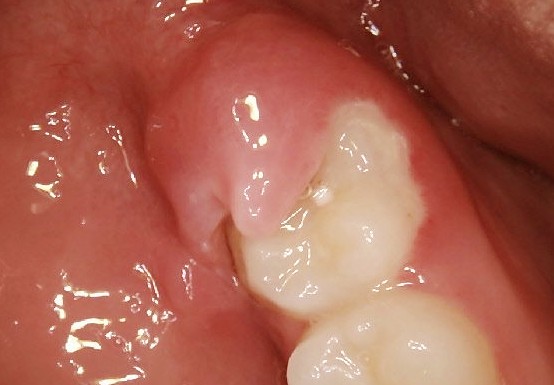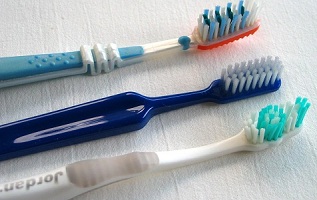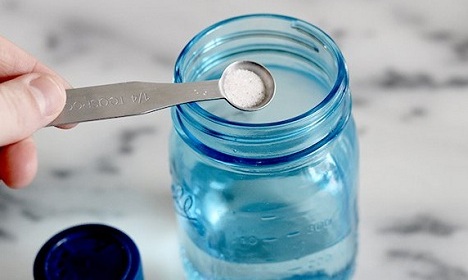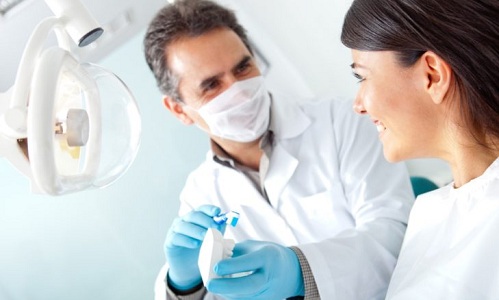Wisdom tooth is one of four third molars in adult teeth. As they are the last teeth in the dental arch, you usually experience pain when they erupt. Interestingly, some people never develop all the third molars, but some may have more than four wisdom teeth. Sometimes, you have the wisdom teeth but they are not visible mainly because they stay under the gingival tissue. A partially erupted wisdom tooth can grow at any angle in the jaw and it can sometimes be a painful situation to deal with. Let's find out more about wisdom teeth.

Should I Remove the Partially Erupted Wisdom Tooth?
Some dentists are of the view that you should remove the wisdom teeth if they grow near the nerve of the lower jaw. The reason is that wisdom teeth sometimes do not emerge normally and become trapped or impacted within the jaw. A passageway develops when your wisdom tooth emerges partially, and this can cause problems mainly because the area is hard to clean and is more likely to become infected.
You should also consider your age when deciding if you should have your wisdom tooth extracted. Younger patients are less likely to experience serious complications after the removal of the wisdom tooth. Therefore, you should consider leaving your impacted wisdom tooth alone if you are over 35 years of age and your tooth is not causing any problem.
When to Remove It
As per the American Dental Association, you may consider removing your the tooth if it causes serious pain, has cysts, or leads to a gum disease. Tumors, repeated infection of soft tissue, damage to nearby teeth, and extensive tooth decay are some other issues that make extraction a reasonably good option. Be sure to discuss everything with your doctor before you finalize your decision of having your impacted tooth extracted.
How Much Does the Extraction Cost?
Simple extraction usually does not cost more than $99 per tooth, however, you will have to pay around $230-$340 to have your impacted wisdom tooth removed. The cost may vary depending on where you live. Be sure to ask a number of oral surgeons and dentists for what they charge before making a decision. Check if your insurance policy also covers the cost of wisdom teeth removal.
How to Care for Your Partially Erupted Wisdom Tooth
You are more likely to develop a bacterial infection because the location of wisdom teeth makes it difficult to clean them properly. Here are some steps to follow to minimize the risks of infections and oral problems.
1. Use the Right Brush
 It is important to brush your teeth regularly, but you should opt for a narrow-headed toothbrush to ensure you clean your partially erupted wisdom teeth properly. Be sure to brush twice a day–you may also consider brushing after meals for added protection. Also, opt for a soft-bristled toothbrush and brush gently to clean your teeth without hurting your gums. Moreover, you should never forget to brush your tongue to remove any remaining food particles.
It is important to brush your teeth regularly, but you should opt for a narrow-headed toothbrush to ensure you clean your partially erupted wisdom teeth properly. Be sure to brush twice a day–you may also consider brushing after meals for added protection. Also, opt for a soft-bristled toothbrush and brush gently to clean your teeth without hurting your gums. Moreover, you should never forget to brush your tongue to remove any remaining food particles.
2. Never Forget Flossing
 You cannot underestimate the importance of flossing, especially when you have a partially erupted tooth. Using water flosser is a good idea but normal floss will work just fine. Be sure to floss at least once a day and ensure that you have removed any debris collected around your wisdom teeth or inside the gums. Simply wrap the floss around your middle fingers and grip the floss with your thumb and forefinger. Gently, guide the floss between the teeth and curve it gently once it is close to your gum line. Move it in an up and down motion and use more floss if necessary.
You cannot underestimate the importance of flossing, especially when you have a partially erupted tooth. Using water flosser is a good idea but normal floss will work just fine. Be sure to floss at least once a day and ensure that you have removed any debris collected around your wisdom teeth or inside the gums. Simply wrap the floss around your middle fingers and grip the floss with your thumb and forefinger. Gently, guide the floss between the teeth and curve it gently once it is close to your gum line. Move it in an up and down motion and use more floss if necessary.
3. Try an Antiseptic Mouth Rinse
 Rinsing your mouth with an antiseptic mouth rinse after brushing and flossing will keep your gums healthy and prevent gingivitis. Mouthwashes with chlorhexidine prove to be more effective, but avoid anything with alcohol because it can dry out the soft tissues in your mouth. When using mouthwash, be sure to swish it around in a way that it reaches your wisdom teeth as well.
Rinsing your mouth with an antiseptic mouth rinse after brushing and flossing will keep your gums healthy and prevent gingivitis. Mouthwashes with chlorhexidine prove to be more effective, but avoid anything with alcohol because it can dry out the soft tissues in your mouth. When using mouthwash, be sure to swish it around in a way that it reaches your wisdom teeth as well.
4. Gargle with Saline Solution
 You can always reduce the pain caused by your partially erupted wisdom tooth by reducing the inflammation, and you can do it by rinsing your mouth with saline solution. Take 8 oz. of warm water and dissolve half a teaspoon of salt in it. Use this solution to gargle for 30 seconds. Do not swallow the solution though.
You can always reduce the pain caused by your partially erupted wisdom tooth by reducing the inflammation, and you can do it by rinsing your mouth with saline solution. Take 8 oz. of warm water and dissolve half a teaspoon of salt in it. Use this solution to gargle for 30 seconds. Do not swallow the solution though.
5. Use an Irrigator
 To prevent infection, rinse the areas around your teeth with a small plastic syringe or an irrigator. Use it right after meals and especially at bedtime to eliminate any debris collected around your wisdom teeth. To get better results, fill the irrigator with saline solution. Be sure to keep the tip of the irrigator as close to your teeth as possible to clean it thoroughly.
To prevent infection, rinse the areas around your teeth with a small plastic syringe or an irrigator. Use it right after meals and especially at bedtime to eliminate any debris collected around your wisdom teeth. To get better results, fill the irrigator with saline solution. Be sure to keep the tip of the irrigator as close to your teeth as possible to clean it thoroughly.
6. Keep Your Mouth Moist
 You should drink plenty of water daily to keep your mouth as moist as possible. Not drinking enough water will make your mouth dry, which provides bacteria a perfect environment to thrive. Dryness in your mouth will also cause bad breath.
You should drink plenty of water daily to keep your mouth as moist as possible. Not drinking enough water will make your mouth dry, which provides bacteria a perfect environment to thrive. Dryness in your mouth will also cause bad breath.
7. Talk to Your Dentist
 Even if you do not feel any pain yet, you should still see your dentist regularly to ensure no infection is developing around your wisdom teeth. If there is pain, talk to your doctor about having your tooth extracted.
Even if you do not feel any pain yet, you should still see your dentist regularly to ensure no infection is developing around your wisdom teeth. If there is pain, talk to your doctor about having your tooth extracted.
